Robert Angotti, Lic. Ac., Herbalist,, Aikidoist, Farmer?

This growing season put my willingness to identify as a “farmer” to the test. Hot weather virtually no rain were some of the first things educating me in on the challenges farmers face. I have taken to calling our farm “40 Acres and a Fool”. The nickname fits for many reasons. Firstly, it’s clear that I am, and always will be, a student of the land. In fact, my first (and only) rule on the farm currently is to admit that I know nothing. I look forward to telling you more about how the land is educating me on this future posts. In fact, anyone who purchases crops from this growing season will be automatically enrolled for free as a member of the “40 Acres and a Fool Newsletter”. I hope to find more time to work on this through the winter. In the meantime, I want to tell you a bit of the story about this growing season and our harvest.
Legacy Farming
We added some orchards to the farm this year. Our primary focus was on hazelnuts, also known as filberts. As a kid my Great Aunt Jenny would bring us hazelnuts from her Washington state gardens each Christmas. My mother would also put out a bowl of mixed nuts in the shell during the holidays season. The mix featured hazelnuts, pecans, walnuts, almonds and brazil nuts. As a voracious nut eater, I found the “shell challenge” an important tool for curbing my holiday nut allotment.

The hazelnut is tasty and tremendously nutritious. The nuts are rich in omega-3, anti-oxidants, vitamins and minerals. Moreover, they store well and if I fail as a farmer, the nuts will support wildlife year ’round.
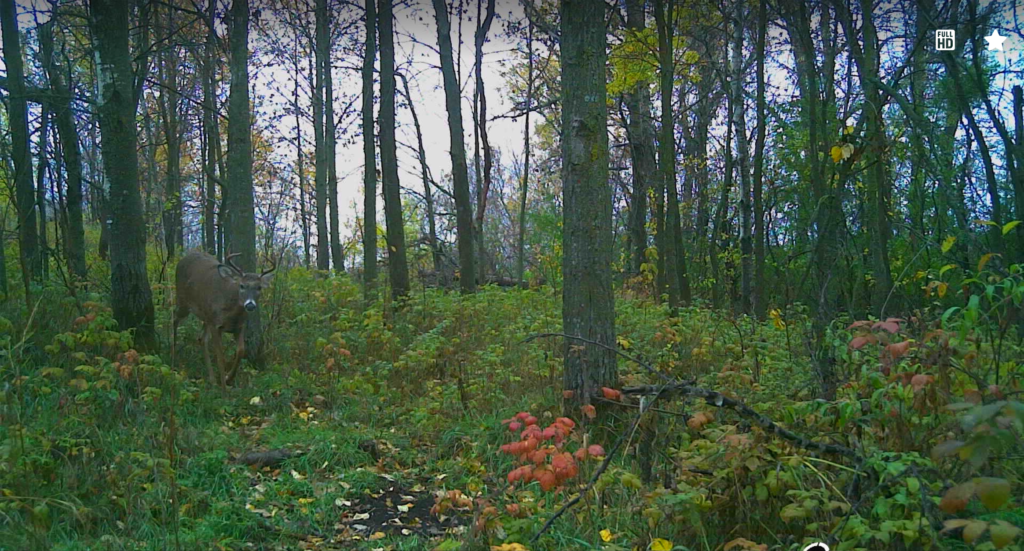
After researching some hybrid hazelnut options, we invested in 100 saplings suitable to our area. After working the soil and building fencing we installed weed fabric and drip irrigation. By we, I mean my son Giulio and many of his strong, young friends who toiled in the ground doing the truly hard work.
Hard work is another important lesson I’m learning about farming. I have tried to make working the farm an extension of my exercise and physical therapy protocol. Someday I can tell you about the health benefits of “pocket gopher mountain climbing”. Today I just want to tell you how much I appreciate you buying some produce so that I can pay young people to do a good portion of this physical labor for me.
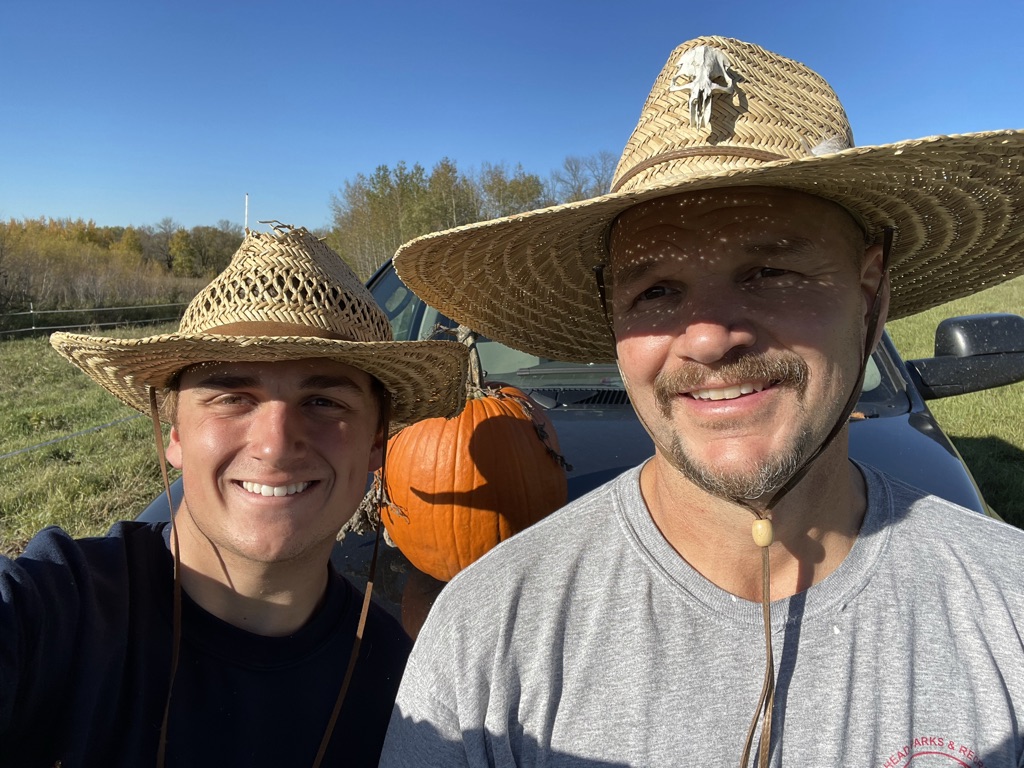
Toiling in the Drought
The labor of planting took us all the way to the end of June. Without the irrigation, we would have been in big trouble trying to establish these plants. I tried several rain dances through the season, but the one that finally seemed to do the trick was the “thistle twist”. This dance involves a high step move where one brings their boot down upon a growing thistle plant and then twists it into the ground before stepping upon the next thistle plant while simultaneously avoiding squash and pumpkins hidden below. I seem to grow thistle really well, but like so many invasive plants, thistle is aggressive and prickly – not the kind of neighbor I want to keep on the farm.
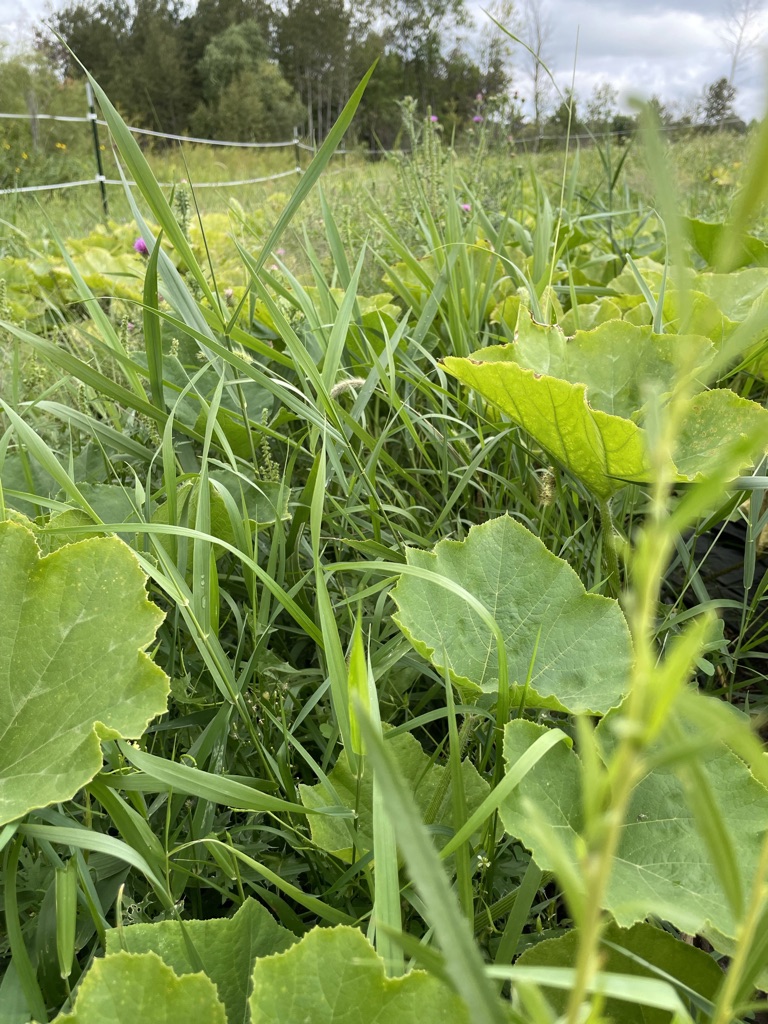
In the end, it seems that the great majority of the hazelnut plants survived the season. If they can survive the winter, and the deer, and the pocket gophers, and lord knows what else….we could start to see nuts from these bushes within two more growing seasons. In addition to the hazelnuts we added a handful of walnut trees. In ten years, we may get a few walnuts!
Cucurbitaceae Field in the “Fertile Crescent”
We decided to take advantage of the irrigation lines used for our hemp fields in order grow pumpkins and winter squash both members of the Cucurbitaceae for cucurbit family. This family of plants which includes gourds, and summer squash is native to North and Central America. With hills on the farm, we have basins and valleys where the nutrients accumulate. One of these basins I refer to as “the Fertile Crescent”. I will write more about that name in the future but it’s clear we have work to do restoring the fertility of the soil, even is this nutrient basin.
We settled on two varieties of pumpkins. One for Halloween decorations and one for eating. We donated the majority of our large pumpkins to the Moorhead Spud football program. We gave pumpkins away to children who came to one of the games. We also grew the “cinnamon girl” pumpkin. This small pumpkin has excellent flavor for pies, breads and even soups. The small pumpkin also makes a nice holiday ornamental.
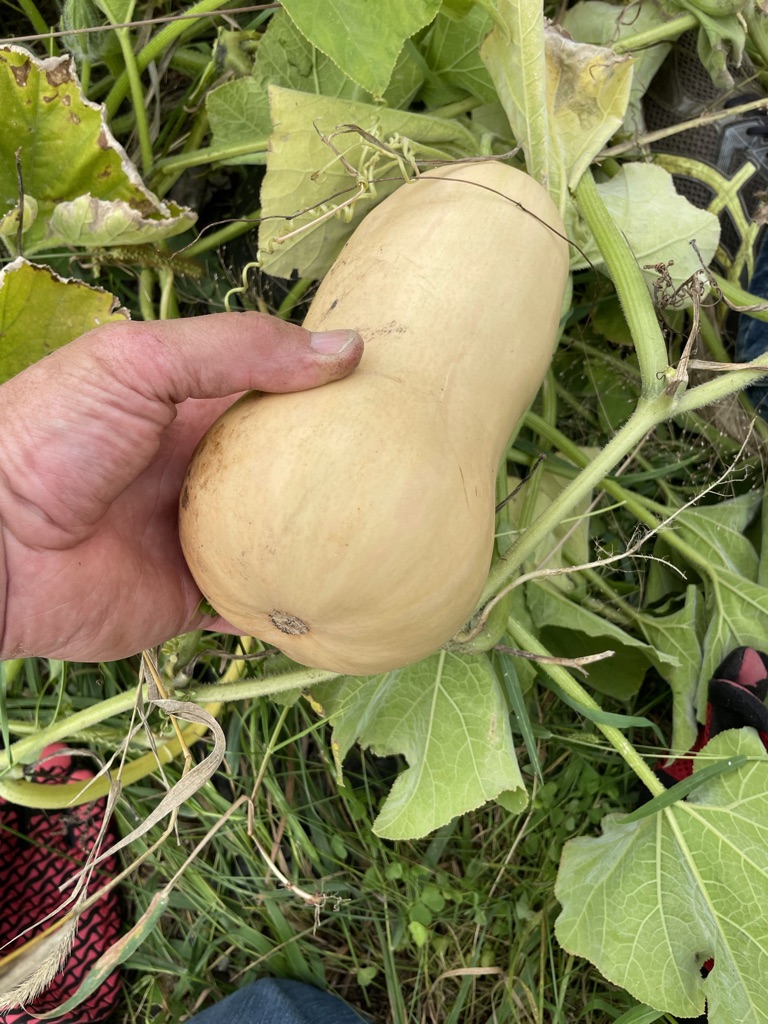
We experimented with growing several different squash as well. Butternut is a favorite of mine so we planted seed for those. We also tried to grow some Buttercup and two interesting Japanese squash; Kabocha and Tetsukabuto. Both of these squash winter well with a hard shell to allow for a very long shelf life. These varieties have a sweet flaky flesh that can be used in all the classic ways. Winter squash has an excellent nutrient profile and is among the varieties of plants that help invigorate digestive function and restore vital energy. All of these produce are now available for purchase at the clinic. Although all of these varieties have a long shelf life, the Tetsukabuto can keep well for up six months getting sweeter through storage.
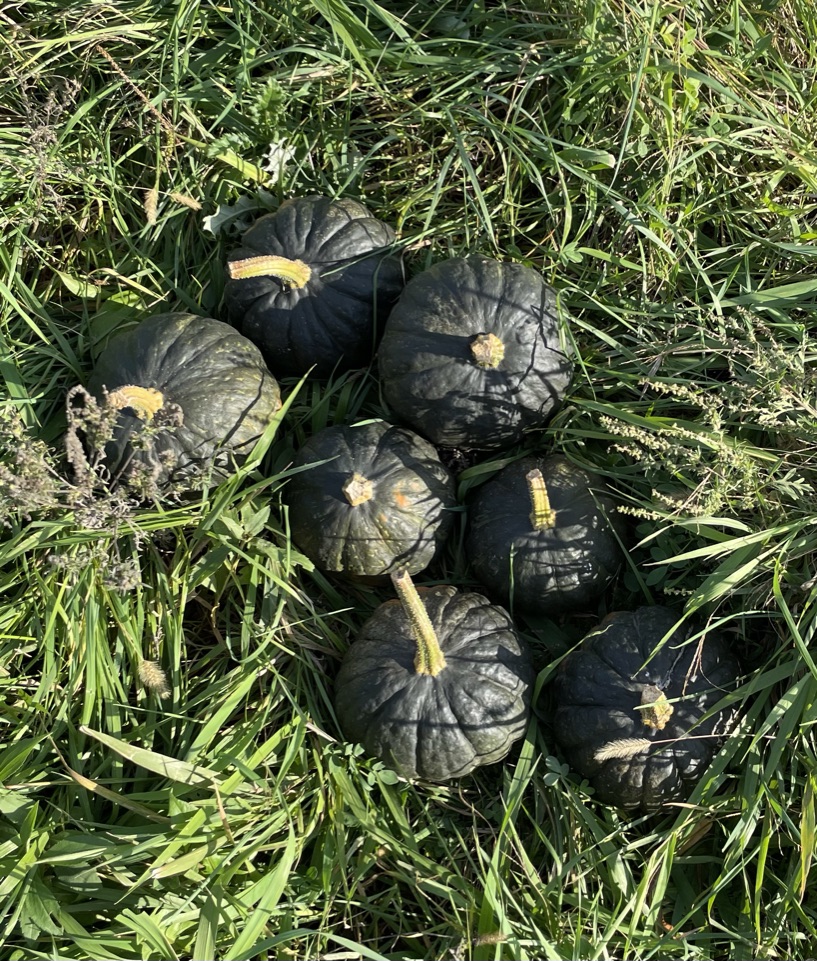
Squash Soup Recipe

I am making this up from memory with some improvisation.
Ingredients:
1 large Butternut or two medium Buttercup, Kabocha, or Tetsukabuto squash
2 yellow onions
4 Cloves fresh garlic
Spices as you like. Paprika and Cumin for instance.
Broth to desired thickness- chicken or vegetable.
Some greens for end garnish: green onions, parsley, kale.
I like to add some roasted nuts as well; walnuts, or pumpkins seeds are nice. Maybe slices of avocado.

Process:
Pre-heat the over to 375 or 400°. Slice the squash down the middle stem to bottom. Remove the seeds. Coat with olive oil, avocado oil or butter. Salt and pepper to season. Place flesh up in an oven tray and roast for 40-45 minutes. The squash flesh should give to a fork throughout when cooked. Cool and then spoon out the flesh.
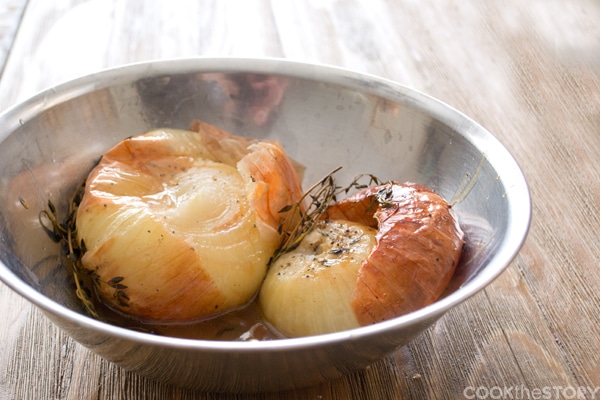
Slice the onions in half. Line another oven tray with foil and oil the foil. Place face down with the skin on and bake for 45 minutes at the above temperature.
Puree the squash and onion together in a blender or food processor with the fresh garlic. Adding broth during this process may make blending easier. Transition to a pot and set at a simmer as you prepare your garnishes. Stir regularly to avoid scalding.
Enjoy!

